McGill Up Close (Page 3)
Ceiling, Moyse Hall.
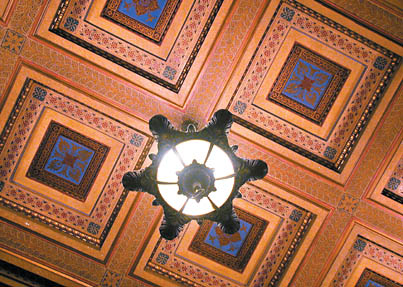
Moyse Hall is the large, 300-seat lecture hall and theatre in the Arts Building. Named for Charles Ebenezer Moyse - the Dean of the Faculty of Arts between 1903 and 1920. The Hall ceiling features ten bronze chandeliers and bas reliefs by Henri Herbet. In heavy demand for student productions during the academic year, the hall is rented by groups like Montreal's Just for Laughs comedy festival to stage rehearsals during the summer months.
Detail, Three Bares Statue.
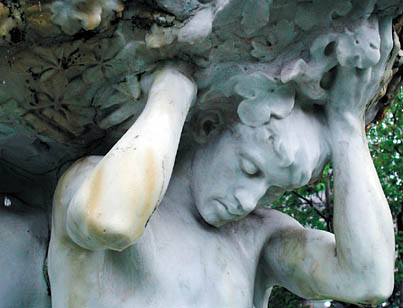
This fountain, created by sculptor Gertrude Vanderbilt Whitney, is one of the most recognizable pieces of art on campus. A gift from friends of McGill in the U.S., it was presented at spring convocation in 1930 and is officially known as the Good Will Fountain. The "Three Bares," considered slightly scandalous at the time, is now a familiar sight for McGill grads, and the park in which the fountain resides is a popular meeting place, play space for Montreal-area children, and site of the annual student-run open air pub, always a big draw during Frosh Week.
Ceiling Light, Entrance to the Arts Building.
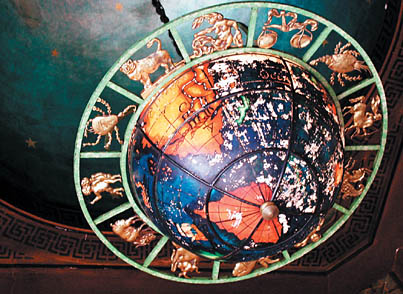
The Arts Building, the oldest of McGill's buildings, was built between 1839 and 1843. Originally known as the McGill College Building, it was not properly finished until Sir William Dawson became principal in 1855. The interior of the building has seen many changes, renovations and additions, but the exterior remains much the same as its 19th century origins. The coloured globe lamp in the entranceway, surrounded by the signs of the zodiac, is meant to symbolize the worldliness of the Faculty of Arts.
Stonework, Macdonald-Stewart Library Building.
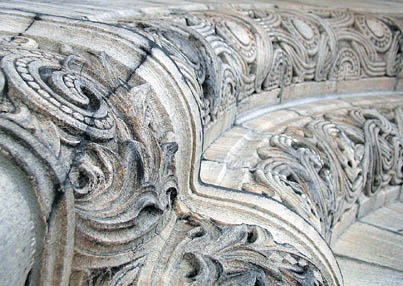
Built in 1893, this building was the home of Physics at McGill until they moved into the Rutherford Physics Building in the late 1970s. No iron or steel was used in the construction of the original building, even in the radiators, to ensure that magnetic interference was kept at a minimum as scientists - including Nobel laureate Ernest Rutherford - studied electricity, light, heat and the elements. Pictured here is some of the intricate exterior stonework at the entrance of the building, which now houses the Schulich Library of Science and Engineering.
Exhaustion, Fatigue, Violent Effort, Breathless-ness, Sculptures by R. Tait McKenzie, Davis House.
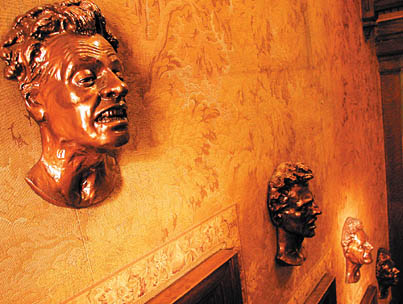
Robert Tait McKenzie (1867-1938) graduated from McGill's medical faculty in 1892 and was the Medical Director of Physical Training, as well as Demonstrator of Anatomy, when he received the inspiration that eventually led to his becoming world famous as a sculptor of athletes. His work can be found in the Louvre and the Nationally Gallery of Canada, and the sculptures pictured are bronze replicas of clay masks modelled on a snapshot of B.J. Wefers, a celebrated sprinter of the day.
Architectural Detail, Hosmer House.
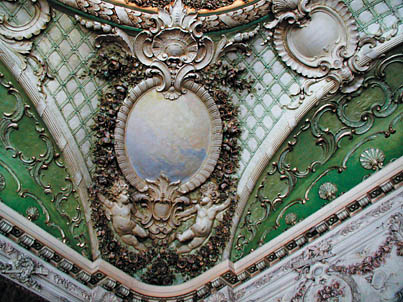
In 1901, Charles Hosmer commissioned renowned Canadian architect Edward Maxwell to build him a mansion. The mansion's design reflects the opulent Paris Beaux Arts style, with elements throughout the house from the Renaissance, the Rococo style of Louis XVI, and the Baroque. McGill bought the mansion in 1969 and it is presently used by the School of Physical and Occupational Therapy. Here we see some of the ornate detail framing a Rococo ceiling mural.


